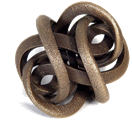Annotation:Duke d'Aumont's Delight
X: 1 T:Duke d'Aumont's Delight. WCD3/2.100 M:6/4 L:1/4 N:Spurious barline removed from middle of bar 7 Z:vmp. Peter Dunk 2015 www.village-music-project.org.uk B:Walsh, Compleat Country Dancing Master, 3rd Series, 2nd Bk, 3rd Ed., 1749 N:EASMES dates the volume to 1736. Q:3/4=90 K:C G|c3/B/c A3/d/c|B3 G2g|f3/e/f d3/g/f|e3 c3/c/d|e3/d/e e3/d/c| g3 B2G|c3/d/B A3/G/^F| G3- G2::e/f/|g3/f/g g3/a/g|f3/e/f f3/g/f| e3/d/e e3/f/e|d3/^c/d d3/e/f|g3/f/e f3/e/d|g3 B2A|B2c d/c/BG|c3- c2:| W: W:Each Strain Twice. (repeats added to notation accordingly)
DUKE d'AUMONT'S DELIGHT. English, Country Dance Tune (6/4 time). C Major. Standard tuning (fiddle). AABB. Louis, Duke d'Aumont (1667-1723), the son of an army officer, was the French ambassador to England in 1713. He held some of the very first masquerades in England at Somerset House. English composer and violinist Henry Eccles (1670-1742) spent a large proportion of his life working for the Duke and traveled with him to France later in in 1713. The Duke d'Aumont composed "Duke d'Aumont's Minuet", printed in The Lady's Banquet, and another of his compositions was printed in D'Urfey's Wit and Mirth; or, Pills to Purge Melancholy (1719-20).
<vote type=1 />
